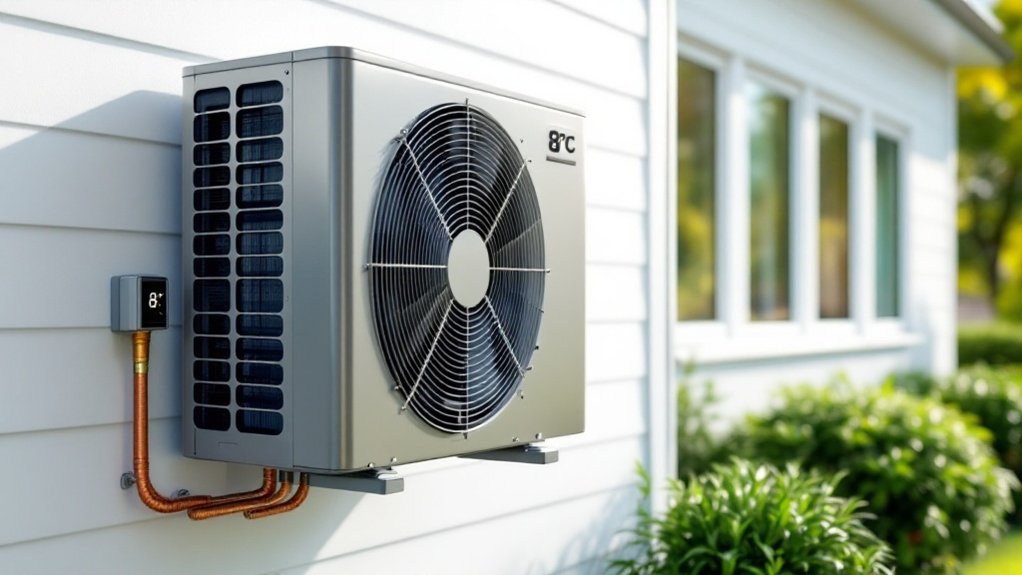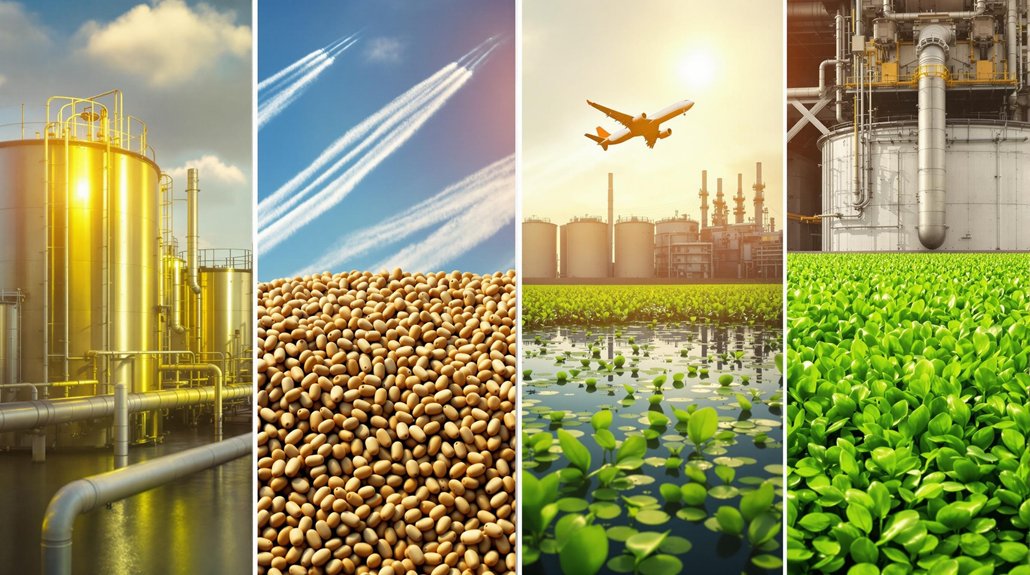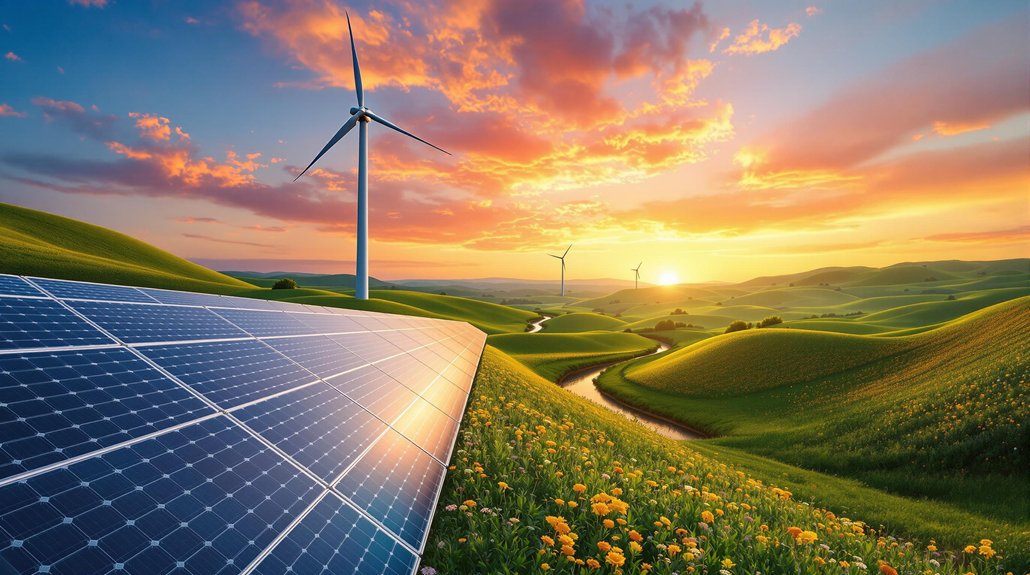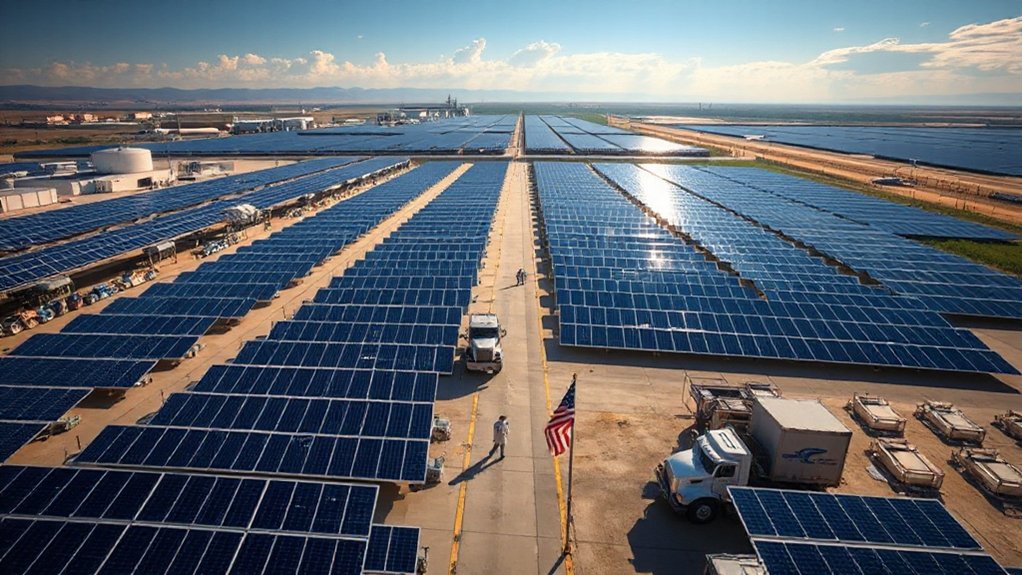Heat pumps are engineering marvels that achieve the seemingly impossible – efficiency ratings of 300-400%. Unlike traditional heaters that generate warmth, these systems simply move heat from one place to another, like a super-powered temperature shuffler. They operate using metrics like COP (2.0-5.4), SEER2 (up to 22), and HSPF2 (up to 13.2), making them energy-saving powerhouses. When properly maintained, they slash heating costs by up to 50%. The science behind this efficiency revolution gets even more fascinating.

While traditional heating systems struggle to break even on energy efficiency, heat pumps are busy shattering records. These mechanical marvels can achieve mind-boggling efficiency levels of 300-400% in ideal conditions – yes, you read that right, more than 100% efficiency. It’s not magic; it’s just smart engineering moving heat instead of creating it.
The efficiency game comes down to three key players: COP, SEER2, and HSPF2. COP is like a snapshot of performance, typically ranging from 2.0 to 5.4 at 8°C outdoor temperature. SEER2 measures cooling efficiency over an entire season, with today’s minimum requirements at 14.3 for split systems. HSPF2 handles the heating side, starting at 7.5 minimum. The Carnot efficiency equation determines the maximum theoretical performance these systems can achieve. Some high-end units are pushing these numbers through the roof, reaching up to 22 SEER2 and 13.2 HSPF2. Regular maintenance checks keep these efficiency ratings at their peak throughout the system’s lifespan.
Mother Nature, however, likes to mess with these numbers. Cold weather? Watch that efficiency drop. Poor installation? There goes your performance. Neglect maintenance? Good luck with those energy bills.
Even the most efficient heat pump can’t overcome Mother Nature’s challenges, poor installation practices, or neglected maintenance routines.
But when everything aligns – proper sizing, quality installation, regular servicing – heat pumps can slash heating energy use by up to 50% compared to electric resistance heating. Like geothermal systems, heat pumps offer impressive longevity with proper maintenance, often lasting well beyond two decades.
Modern heat pumps are getting smarter by the day. Variable-speed compressors, advanced defrost cycles, Wi-Fi connectivity – they’re practically space-age machines at this point. Some even team up with traditional heating systems for those polar vortex moments, because nobody likes a cold shower in January.
The environmental impact is where things get really interesting. These units are helping tackle climate change one degree at a time. When powered by renewable electricity, they’re fundamentally zero-emission machines.
Lower refrigerant charges, reduced carbon emissions, and contributing to building sector decarbonization – heat pumps are the poster child for green heating and cooling. Not bad for a box that sits outside your house looking like an oversized air conditioner.









